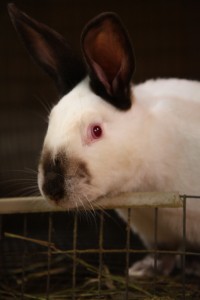Whole charts have been created about how different combinations of Type make for different sorts of friendships or conflicts.
For example, you’re likely to have a fairly easy friendship with someone who shares your two inner letters, because you approach the world with a similar orientation.
Or, if your outer two letters are the same, you might be good roommates because you have relatively similar habits.
When your inner two letters are both reversed, you become one another’s “enigma,” wondering what in the world makes that person tick?
An ISTJ might be the hardest for me to truly understand (or me for them), but we tend to tolerate each others’ presence fairly peaceably. We may neither of us want to be the other, but I think we are able to appreciate the unique contribution of the other person’s type.
The truly hardest type for me to appreciate is the Innovator, aka SP, quadrant. What they’re good at are things I don’t feel a need for, and it’s hard to value a group if you don’t see them as fulfilling a necessary role.
~ ~ ~
This really bothered me.
Here was a group of people (almost 50% of the population!) that I admitted I couldn’t see the value of. Not only did it mess with my view of myself as an accepting, loving person, it seemed really unhealthy.
I read all the reasons of course (they’re in every typing book or article-series out there), and I understood them cognitively, but I was embarrassed by how little difference the information made. None of the examples I saw in my real world were helping, either.
So I prayed about it.
Yes, I prayed about a personality quadrant. I hope you can understand why.
About this same time I was working to figure out the types of the people closest to me (some were taking the quizzes, some weren’t).
My parents and my husband were of deepest interest to me; my parents (I’ll admit) because I wondered how who they were had affected who I am, and my husband because, well, he’s so perfect for me, and I’ve got this private research going with type-pairing in successful marriages and my own little personality theory about the marriage’s M-B type.
Anyway, because of how balanced they all are (or maybe it’s just how well I know them?) they were as tricky to suss out as I was.
What I ended up doing (instead of trying to pick their preferences) was jumping to the deeper level of cognitive functions. (Please understand this has everything to do with how long I’ve been playing with this theory, not something I expect anybody to try.)
My husband has a delightful mix of traits that I appreciate in both my parents, but at a level I like so much better (which is perfect considering I live with him now, not them).
- They all have a solid Fi (they’re much at ease than I when encountering opinions different than their own)
- Jay and my mom both bemoan their poor memories (but since they know their weak spot, they know how to compensate for it, so they both are very conscientious and careful to remember important things) I called this Se
- All of them are good at producing a quotable soundbite in a please-help-me crunch of time. Which makes sense because Te is the natural opposite of the Fi I already mentioned.
- And for Mom and Jay, the natural opposite of Se is Ni, which is my dominant process, and may explain why I can feel like I have a such a good connection with either one of them
(I’m giving this process much more organized and incremental that I ran it in real time, but I wanted to offer a model in case anyone else should find it useful.)
Now, for all that my mom and my husband are both very detail-oriented (Se), my husband is more fun to be around (sorry, Mom). In terms of hierarchy, my mom’s Te is over her Se, while for my husband it’s reversed. She works before she plays. Sometimes to the extent that I wonder when (if!) she plays.
I lined out the remaining order of preferences and made a shocking discovery.
Best-fit I have for Jay is ISFP.
I am married to an Innovator.
And when I said that sentence aloud, I responded with, Yes, I knew he was brilliant but I didn’t know he was SP!
I checked my “math.” And I laughed, and thanked God for his many good answers to many prayers.
Now I can appreciate SPs like I never knew I would, because I am learning how many people I already love and appreciate are this type.
And the ones that bug me? Yeah, Innovators also make the highest percentage of my bug-me group, but that’s to be expected. We are most irritated by that most different from (or the most similar to) ourselves.
But God is always gracious: What he designs is good, and I firmly believe that if you ask any designer to elaborate on the brilliance of his design he will be happy to oblige.




